#potato biryani recipe
Explore tagged Tumblr posts
Text
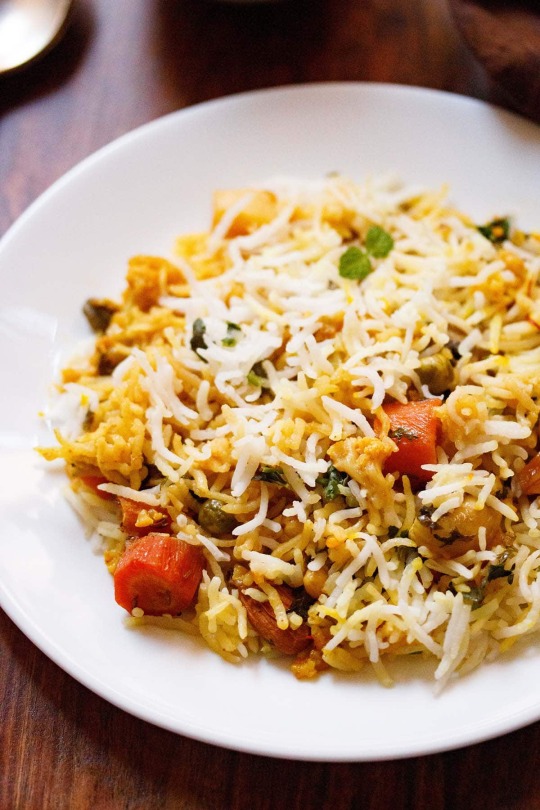
Hyderabadi Veg Dum Biryani
#food#vegan#indian food#rice#biryani#vegetables#rice bowl#comoft food#recipe#cinnamon#potatoes#mushrooms#nuts#berries#yogurt
14 notes
·
View notes
Text
Watch: How To Make Delicious Aloo Dum Biryani For Your Weekend Indulgence
Most of our weekdays are typically fast-paced they usually fly by in a haze of busyness. We hardly get the prospect to decelerate till Saturday arrives. Well, now that the weekend is right here, we’re able to cease operating round and luxuriate in ourselves. Some scrumptious meals would go hand-in-hand with our plans for leisure. And what higher dish than biryani to bask in? While there are…

View On WordPress
#aloo dum biryani recipe#best biryani recipes#biryani with potato#dum biryani recipe#indian biryani options#indian food#veg biryani#veg dum biryani recipe
0 notes
Text

Hello, happy Monday! Thank you @wellbelesbian, @you-remind-me-of-the-babe and @bitbybitwrites for the tag. I was at a birthday party yesterday, but better late than never, eh?
I know I still have to finish the 2nd February Friday Event, but here's six sentences of the 3rd:
“I can ask my dad if I can bring the japchae that’s in our fridge.” “And I am thinking about trying out my mum’s mashed potatoes.” “I have some leftover biryani from my grandma’s birthday.” Raine, Dae-Sung and Frances are all discussing what they should bring to the potluck, which isn’t a weird thing, because the potluck was planned ages ago. But Aled and Carys don’t really know what to add for now. It’s obvious that the others are bringing something that is important to their families, but their mother has never even cared to teach her children a family recipe, if there are any.
Yeah, this was supposed to be cute and fluffy and wholesome, but oops, a wild angst has appeared!
And now, the weather: @quizasvivamos @coffeegleek @caramelcoffeeaddict @raenestee @tectonicduck @nightimedreamersworld @urban-sith @thnxforknowingme @captain-aralias @cerriddwenluna @bookish-bogwitch @confused-bi-queer @that-disabled-princess @special-bc-ur-part-of-it @larkral @cutestkilla @artsyunderstudy @martsonmars @facewithoutheart @shrekgogurt @rockitmans @whatevertheweather @theotherhufflepuff @shame-is-a-wasted-emotion @esilher @kurtsascot @blackberrysummer @nightimedreamersghost
12 notes
·
View notes
Text

Vegetarian Biryani
Vegetarian Biryani is a delightful and aromatic rice dish that combines a variety of vegetables, fragrant spices, and basmati rice. Here's a step-by-step recipe to prepare a rich and flavorful Vegetarian Biryani at chaskka.
Ingredients:
For Rice:
2 cups Basmati rice
4 cups water
2 bay leaves
4-5 cloves
2-3 green cardamom pods
1-inch cinnamon stick
1 star anise
1 teaspoon salt
For Vegetables:
2 tablespoons oil or ghee
1 teaspoon cumin seeds
1 large onion, thinly sliced
1 tablespoon ginger-garlic paste
1 cup mixed vegetables (carrots, peas, beans, and potatoes), diced
1 cup cauliflower florets
1 green bell pepper, sliced
1 large tomato, chopped
1/2 cup thick yogurt
Salt to taste
For Biryani Masala:
1 teaspoon turmeric powder
2 teaspoons coriander powder
1 teaspoon cumin powder
1 teaspoon red chili powder (adjust to taste)
1 teaspoon garam masala
1 teaspoon biryani masala (optional, for added flavor)
1/4 teaspoon saffron strands soaked in 2 tablespoons warm milk (optional, for color and aroma)
For Layering and Garnish:
1/4 cup fresh cilantro (coriander) leaves, chopped
1/4 cup fresh mint leaves, chopped
2 tablespoons fried onions (optional, for garnish)
1/4 cup cashew nuts and raisins, fried (optional)
2 tablespoons ghee or oil
1/2 lemon, juiced
#Ingredients:#For Rice:#2 cups Basmati rice#4 cups water#2 bay leaves#4-5 cloves#2-3 green cardamom pods#1-inch cinnamon stick#1 star anise#1 teaspoon salt#For Vegetables:#2 tablespoons oil or ghee#1 teaspoon cumin seeds#1 large onion#thinly sliced#1 tablespoon ginger-garlic paste#1 cup mixed vegetables (carrots#peas#beans#and potatoes)#diced#1 cup cauliflower florets#1 green bell pepper#sliced#1 large tomato#chopped#1/2 cup thick yogurt#Salt to taste#For Biryani Masala:#1 teaspoon turmeric powder
3 notes
·
View notes
Text
youtube
Dawat-e-Biryani
Dawat Yan Banquet is proud to present Dawat-e-Biryani, a collaboration between Mariam Magsi and her beloved, Gordan Sumanski. Biryani has the ability to bring people together. The yield is large, enough to satisfy all that partake in the eating of this layered, complex, historical and dynamic rice-based dish. Biryani is enjoyed in a variety of unique ways. In some parts of South Asia, like in the Sindh province of Pakistan, it is consumed with potatoes, while in other parts of the continent, such as South of India, it is eaten with eggs. Depending on the area, community, province and even family, within Pakistan itself, Biryani is created and consumed in many diverse ways and there are many healthy rivalries and culinary competitions amongst varying communities, about whose is the most authentic.
Within one Pakistani household, some members of the family may enjoy plums in their Biryani while others forego the dried fruit. Some folks like it plain, while others drown their Biryani in Raita (yogurt with cucumber). Some people eat it with their hands, while others prefer to cradle the colourful grains of rice with spoons and forks. Some like it sweet and spicy, and may even mix Zarda (a vibrant, colourful, sweet rice-based dish) with their Biryani, while others find the sweet and savoury mix to be an absolute abomination.
One aspect that qualifies Biryani for the Dawat Yan Banquet is the dish’s unique ability to unite people from all backgrounds, in feast, and in community, making the basis for the Dawat Yan Banquet. The food is inclusive, historical, and has connections to the Old Silk Road. Regional variations have all the common elements, the cause and effects of historical trading, and colonialism in the South East Asian subcontinent. Biryani brings a unique perspective to Dawat Yan, making the viewer question borders, race, culture and authenticity.
Dawat Yan Banquet is virtually hosted by Eric Chengyang and Mariam Magsi between the months of February and April, as part of the Art Gallery of Ontario's AGOxRBC Artist in Residence program, 2022. The Dawat Yan Banquet is part of Dawat Yan Project: dawatyanproject.tumblr.com - Visit the blog for archives, audio+video interviews, recipes, historical food tours, poetry and more.
Video Credits-:
Featuring: Gordan Sumanski Videography: Mariam Magsi Audio + Video Editing: Mariam Magsi
Audio Credits-:
Poetry: Adeen Taji aka Mohtarma Rubina Magsi Vocalist: Ustad Ghulam Abbas Album: Thehriye Production Studio: Saregama, 2017
Location: Toronto, Canada Archives derived from the Magsi family in Karachi, Pakistan
#dawatyanproject#gordansumanski#mariammagsi#toronto#pakistan#karachi#sindh#biryani#food#love language#Youtube
3 notes
·
View notes
Text
Most Popular And Best Dishes In India By Akshay Mehndiratta That You Must Try

India is a country where you can taste a wide variety of famous dishes and you will find many food lovers relishing the delicious flavors. In India, many food bloggers from abroad come to enjoy the famous and delicious food of the country. One such blogger is Akshay Mehndiratta, who loves not only cooking but also eating. He travels to the most famous states of India and samples their famous dishes. Through his blog, he shares recommendations for dishes he savors during his journeys, tempting your taste buds. These famous dishes are a must-try!.
1. Biriyani
Biryani, a favorite dish in India, holds a special place in the culinary world with its rich taste and aromatic spices. Food lover Akshay Mehndiratta enjoys a variety of dishes ranging from juicy chicken biryani to delicious egg biryani, delicious mutton biryani to juicy prawn biryani and even the vegetarian flavor of mushroom biryani. Each variation of biryani gives a completely unique blend of spices and ingredients, reflecting the cultural richness and culinary history of India. From aromatic Hyderabadi Dum Biryani to spicy Kolkata Biryani and aromatic Lucknowi Biryani, the surrounding specialties enrich the biryani landscape, tantalizing the senses and leaving diners yearning for more. Since Akshay loves the diverse flavors of biryani, he recommends this biryani to everyone.
2. Vada Pav
Vada pav is a vegetarian dish that brings water to the mouth. It is a famous dish in India and people are relishing this dish. Akshay says that a classic street food dish from the busy streets of Mumbai is made from spicy potato, coated in gram flour, and served with chutney and pav. This highly satisfying snack embodies the creativity of Indian street food culture, which Ashok Vaidya started selling outside the Dadar railway station in 1966. It has now reached the hearts and minds of the people and is loved by them.
3. Masala Dosa
Masala Dosa, an essential South Indian dish, is a favorite culinary treasure known for its crispy texture and delicious potato or vegetable filling. Foodie Akshay Mehndiratta also enjoyed this traditional dish, which consists of thin, golden-brown crepes in a lentil batter filled with a combination of fermented rice and spicy potatoes. Dosa is expertly folded and served with coconut chutney, spicy sambar and sometimes extremely spicy red chutney, making it a delicious dish. Be it breakfast or lunch, masala dosa never fails to create a sense of satisfaction, making it a favorite among foodies everywhere.
4. Chloe and Kulcha
Chole and Kulcha, a famous street food originating from the bustling streets of Delhi, captures the essence of North Indian flavors in a delicious and hearty snack. Chole is a spicy and tangy chickpea curry packed with aromatic spices like cumin, coriander and garam masala. This chole is served hot with kulcha. Kulcha is soft and fluffy leavened bread, often topped with ghee to make it delicious. Chole and kulcha together create a harmony of texture and taste that delights the taste buds. Akshay appreciates the culinary artistry behind this beloved street food that has made its way into the hearts and stomachs of foodies across India.
5. Kachori
Kachori, a favorite Indian snack loved for its crunchy exterior and delicious taste, is a recipe that thrills foodies across the country. Akshay Mehndiratta, deeply appreciate of traditional flavours, savors this iconic dish. Hailing from the streets of Rajasthan, Kachori is a fried flour pastry filled with a spicy mixture of lentils, peas or potatoes, flavored with aromatic spices like cumin, coriander and chilli powder. Served hot and crispy, kachori is often paired with spicy tamarind or mint chutney, which elevates its taste to new heights. Kachori, whether served as a snack or a full meal, never fails to evoke feelings of warmth and pride, making it a popular dish in Indian cuisine.
6. Bhelpuri
Akshay Mehndiratta loves Bhelpuri, a popular street food originating from the colorful streets of Mumbai. It is a beautiful combination of crunchy texture and spicy flavour. With a combination of ingredients — crunchy puffed rice, crunchy sev (thin sev made from chickpea flour), chopped onions, tomatoes and baked potatoes — served with spicy tamarind, or green chutney. this famous snack captures the spirit of Indian street food culture. You can enjoy this dish for a quick breakfast with family and friends, Bhelpuri embodies the spirit of culinary innovation and enjoyment that defines the bustling streets of Mumbai.
7. Misal Pav
Misal Pav is a Maharashtrian dish which is Akshay’s favorite dish. Originating in the colorful streets of Maharashtra, Misal Pav is a highly spicy curry prepared from sprouted moth beans, cooked in a rich and aromatic gravy with a blend of spices like cumin, coriander and turmeric. Served hot, the aromatic curry is garnished with crunchy farsan (fried salty snacks), finely chopped onions, clean coriander and lime juice, which adds a of texture and flavour. With a soft and buttery pav (bread roll), Misal Pav offers a satisfying delightful flavors in every bite.
8. Pav Bhaji
Pav Bhaji, a favorite street food from the bustling streets of Mumbai, It is Akshay’s favorite dish. This iconic dish includes a delicious and aromatic vegetable curry, called bhaji, which is prepared from a combination of mashed potatoes, tomatoes, onions, peas and capsicum, along with spices like cumin, coriander and garam masala. Bhaji cooked in an aromatic mixture of spices is served with smooth and buttery pav (bread roll), which is toasted with a generous amount of butter on a tawa. The dish is garnished with lemon, chopped onions and clean coriander, and it gives an unlimited taste pleasure in each bite.
Conclusion
Amidst the vibrant tapestry of Indian cuisine, Akshay Mehndiratta’s curated some list of dishes that everyone must taste it. From the aromatic allure of Biryani to the crunchy taste of Vada Pav, each dish has a unique taste that captures the essence of India’s diverse cuisine. Akshay’s passion for food and his deep appreciation for traditional flavors is reflected in every recommendation, inviting foodies on a culinary adventure from the congested streets of Delhi to the colorful lanes of Maharashtra.
If you are interested in learning more about delicacies, consider joining Akshay Mehndiratta’s journey. This journey will take you on a culinary adventure through the rich and diverse world of Indian cuisine, where you will experience the amazing flavors and health benefits of traditional Indian cuisine.
2 notes
·
View notes
Text
I have friends I remember by the dish we cooked and ate together most. There's this one friend who relished in egg omelettes and chicken recipes who kept praising my accompanying flatbreads. Then there's this one friend I have made the maddest rice khichdi's with and she kept remembering the potato stuffed flatbread I once made in the breakfast before her final exams. There's this one friend I enjoyed the best pastas of my life with. There's this one person who made biryani for the first time in his life by following my directions. These memories belong to me. I remember people by the food I've made or eaten together.
My memories and friendships are forged in the aromas of happiness and flavours of good food. If you are a dear friend of mine, I'll remember you while I'm making something. Why do my family/friends have to settle for an orange peel theory to feel my love when I have a whole kitchen at my disposal? I'll make you a complete fruit salad if you ask me to peel an orange for you. I'll remove all the skin, pith and seeds along with the peel so that you can enjoy the clusters of joy without having to wait. I love and adore you all so much that I'm dedicating my food to all of you. If we're friends and you're one of my own, you don't have to settle your bar so low. Chin up, I'll whip a storm for you.
2 notes
·
View notes
Text
The Flavorful Journey of SpoonSome
Biryani: A Culinary Tale
Introduction:
SpoonSome Biryani, a culinary delight that transcends borders and unites taste buds, has a journey as rich and diverse as its aromatic flavors. From humble beginnings to becoming a symbol of culinary excellence, the story of SpoonSome Biryani is a testament to the passion and dedication of its creators.
Biriyani
Biryani, a fragrant and flavorful one-pot dish, has captured the hearts and palates of millions across India. Whether it’s a festive occasion, a family gathering, or a simple weeknight dinner, biryani graces the table with its aromatic presence. In this article, we’ll explore the rich history, diverse variations, and the magic behind this beloved culinary masterpiece.
Origin of Biriyani
Biryani’s origins are shrouded in mystery, with various theories tracing it back to Persia, the Mughal courts, or even ancient India. Regardless of its beginnings, biryani has evolved over centuries, blending local ingredients, spices, and cooking techniques.
The Mughals, known for their opulent feasts, elevated biryani to an art form. They combined Persian pilaf techniques with Indian flavors, creating a harmonious symphony of rice, meat, and spices.
Regional Variations
Hyderabadi Biryani: The Nizams of Hyderabad perfected this style. It’s a marriage of Mughlai and local Telugu flavors. The raw biryani involves layering marinated meat and partially cooked rice, sealing the pot, and slow-cooking it.
Lucknowi Biryani: Awadhi biryani is fragrant and delicate. It uses saffron-infused rice and slow-cooked meat, often garnished with fried onions and raisins.
Malabar Biryani: Kerala’s Malabar coast offers a spicy version with coconut milk, curry leaves, and a hint of sweetness.
Sindhi Biryani: Influenced by Pakistani cuisine, Sindhi biryani features marinated meat, potatoes, and aromatic spices.
Origin Story:
The tale of SpoonSome Biryani begins in the bustling streets of Trivandrum, where a young man named Vysakh honed their craft in the art of biryani-making. Inspired by the rich culinary heritage of the region, a group of young entrepreneurs set out to create a biryani experience like no other. Thus, SpoonSome Biryani was born, blending traditional recipes with modern innovation.
On streets in India, where flavors collide and cultures intertwine, there exists a biryani that defies convention. Spoonsome Biryani, born from the creative mind of entrepreneur Vysakh, is more than just a dish – it’s an experience.
Spoonsome, a maverick in the culinary world, envisioned a biryani that would transcend boundaries. Our journey began with a simple question: “What if we reimagine the classic biryani?”
Spoonsome Biryani emerged as the answer – a fusion of tradition and innovation, where every grain of rice tells a story.
Early Beginnings
Recipe Perfection:
At the heart of SpoonSome Biryani's success lies its signature recipe, carefully crafted over years of experimentation and refinement. The secret blend of aromatic spices, tender meat, and fragrant basmati rice creates a symphony of flavors that dance on the palate with every bite.
Each ingredient is meticulously selected to ensure the perfect balance of taste and texture, making SpoonSome Biryani a true culinary masterpiece.
Magic of Biriyani
Basmati Rice The canvas for Spoonsome Biryani, aged basmati rice, forms the foundation. Each grain absorbs the essence of spices and marinated meat.
Marinated Meat Whether succulent chicken, tender lamb, or fragrant fish, the choice of meat defines the biryani. Spoonsome secret lies in the marinade – yogurt, spices, and love.
Spices of Cinnamon, cardamom, cloves, and star anise dance together, creating a symphony of flavors. Spoonsome spice blend is a guarded treasure.
Herbs Fresh mint, cilantro, and curry leaves add brightness and balance. Their whispers infuse every layer.
Making Delicious Dums
Biryani’s magic lies in the “dum” method. The pot is sealed with dough or cloth, trapping steam and flavors. The slow, gentle heat ensures that every grain of rice absorbs the essence of the spices and meat.
The unveiling of a biryani pot is akin to opening a treasure chest – the aroma escapes, and anticipation reaches its peak.
The Lightness Within
Spoonsome challenges the notion that biryani must be heavy. His creation is a delicate balance – rich in flavor yet light on the palate.
No excessive oil or ghee here. Instead, he achieves depth through spices and technique.
The Aroma
As you approach spoonsome, the air changes. It becomes a canvas, painted with the fragrant strokes of cinnamon, cardamom, and cloves. The spices, carefully measured, release their essence – a promise of what’s to come. The aroma dances around you, teasing your senses.
Spoonsome Biryani: A Culinary Symphony of Flavor
In the heart of bustling markets, where the air is thick with spice and anticipation, lies a biryani that defies convention. Spoonsome Biryani, born from the creative genius of entrepreneur Vysakh, transcends mere sustenance. It’s an orchestra of taste, a symphony of fragrance, and a celebration of culinary artistry.
A Flavorful Feast with Hidden Health Benefits
Biryani, including the innovative Spoonsome Biryani, isn’t just a delightful dish; it also offers several health benefits. Let’s explore how this aromatic creation can positively impact your well-being:
Anti-Inflammatory Properties:
The spices used in biryani masala, such as cumin, turmeric, and coriander, possess anti-inflammatory properties.
These spices aid digestion, soothe the gut, and may even boost immunity.
Digestive Aid:
Cumin and cloves, present in biryani masala, have carminative qualities.
They help prevent bloating, neutralize acidity, and promote healthy digestion.
Metabolism Boost:
Indian spices in biryani masala are rich in phytonutrients.
These compounds accelerate metabolism, potentially aiding weight management.
Protein and Fiber Content:
Spoonsome Biryani, especially if it includes chicken or other meats, provides a good amount of protein.
Additionally, the rice contributes fiber, promoting satiety and supporting overall health.
Antioxidant-Rich Spices:
Biryani contains spices like ginger, cumin, and curcumin (from turmeric).
These spices have antibacterial, anti-inflammatory, and even antiviral properties, making them cleansing powerhouses.
Remember, enjoying biryani in moderation allows you to savor its flavors while reaping these hidden health benefits. So, the next time you indulge in a plate of Spoonsome Biryani, relish not only the taste but also the well-being it brings!
Expansion and Recognition:
As word of SpoonSome Biryani's delectable offerings spread, the brand quickly gained a loyal following, both locally and internationally. With a commitment to quality and authenticity, SpoonSome Biryani expanded its reach, opening outlets in major cities across India and beyond. The brand's dedication to excellence earned it numerous accolades and awards, solidifying its position as a leader in the world of biryani.
Beyond Borders
Spoonsome Biryani transcends regional boundaries. It’s not just Hyderabadi or Lucknowi; it’s a canvas where Spoonsome paints with flavors from Iran, Kerala, and beyond. Each bite is a passport to distant lands – a culinary wanderlust.
The Legacy Unveiled
Spoonsome Biryani isn’t just a dish; it’s a legacy. our passion infuses every grain, every spice, and every smile of a satisfied diner.
As the sun sets over our kitchen, we dream of a world where biryani knows no boundaries – where spoonsome becomes synonymous with joy.
In this culinary saga, Spoonsome has rewritten the biryani narrative. So, the next time you savor Spoonsome Biryani, remember that you’re tasting more than a meal – you’re tasting a dream realized.
Some Hidden Gems
Certainly! While Hyderabadi and Awadhi biryani are well-known and beloved, several lesser-known biryani varieties across India deserve attention. Let’s explore these hidden gems
Bangalore Dum Biryani
Originating from Bangalore, this biryani is usually made with lamb, fish, or chicken. It leans toward the milder side in terms of spice but promises delightful flavors in every spoonful. Often served at Muslim weddings, it’s a favorite among Bangaloreans.
Meen Biryani (Kerala Coastal Flavors)
Hailing from the coastal regions of Kerala, Meen Biryani celebrates the bounty of the sea. “Meen” means fish, and this biryani layers spiced fish with rice, fried cashews, caramelized onions, and aromatic spices. It’s a scrumptious ode to Kerala’s culinary heritage.
Thalassery Biryani (Kozhikode Biryani)
With its Arab origins, Thalassery Biryani is popular along the Malabar coast. It uses a distinct rice variety called Jeerakasala or Khyma, which is fragrant, short, and thin. The biryani is cooked with mouthwatering aromatics, and ghee, and topped with fried raisins and cashews, creating a royal touch.
Beary Biryani (Mangalorean Delicacy)
Contrary to the usual spicy biryanis, Beary Biryani is mildly spiced. Originating from the coastal areas of Dakshina Kannada, it’s a Mangalorean delight. The subtle aroma of fennel seeds sets it apart, and it tastes even better the next day.
Ulavacharu Biryani (Andhra Pradesh Specialty)
A household recipe from Andhra Pradesh, Ulavacharu Biryani is spicy and aromatic. It features fennel, cloves, star anise, and the unique biryani flower. A tip: Cook the rice in the same water where the chicken is boiled to enhance the flavors.
These lesser-known biryanis offer a delightful twist to the classic dish, each reflecting the rich culinary diversity of India. Next time you’re craving biryani, consider exploring these hidden treasures!
Cultural Impact:
Beyond its culinary prowess, SpoonSome Biryani holds a special place in the hearts of food enthusiasts worldwide. Its ability to bring people together, regardless of background or beliefs, is a testament to the unifying power of good food. Whether enjoyed at a family gathering or a festive celebration, SpoonSome Biryani has become a symbol of shared joy and camaraderie.
Future Prospects:
As SpoonSome Biryani continues to captivate taste buds and inspire food lovers, the future holds endless possibilities for this beloved brand. With a commitment to innovation and a dedication to quality, SpoonSome Biryani is poised to embark on new culinary
1 note
·
View note
Text
recipe planning for the week to stave off panic… last week I made everything except the vegetable biryani which I may still attempt (or might recycle the ingredients into this week’s recipes). here’s what I’m thinking for this weekend/next week:
ottolenghi green pancakes with lime butter
braised tofu with basil stir fry
sweet potato hash with eggs
maybe a butternut squash thing tbd? or maybe I want to bake something idk
5 notes
·
View notes
Text
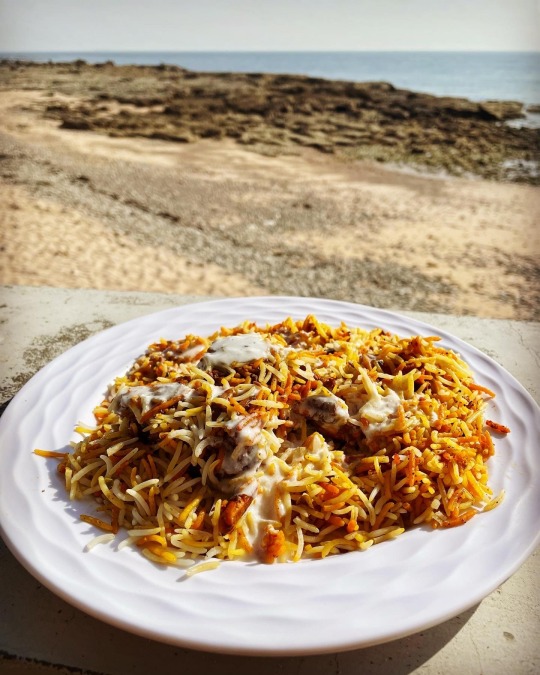
Image 1: Biryani on the Beach, Karachi edition. This Biryani feast was organized by my sister on my last trip home. We enjoyed it outdoors at French Beach.
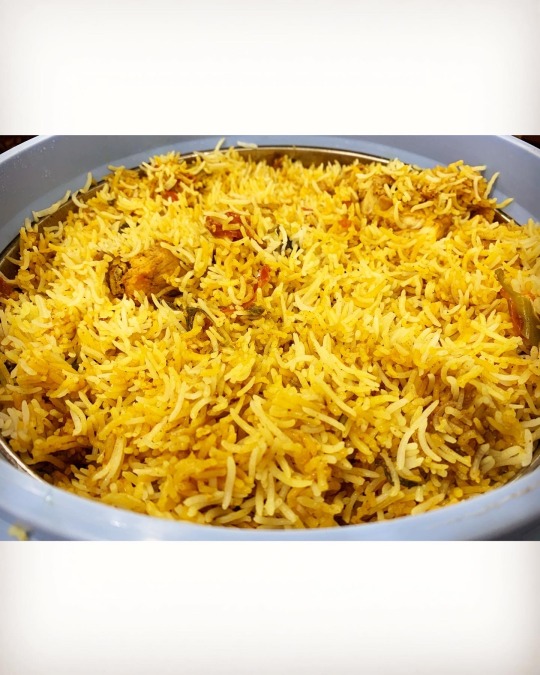
Image 2: This special Biryani was created by my mother’s cousin - It was cooked during the last days of Ammi’s life at Aga Khan Hospital in Karachi, and though she was not able to enjoy it herself, she was beyond grateful to see her kids, and family members, enjoying Biryani together.
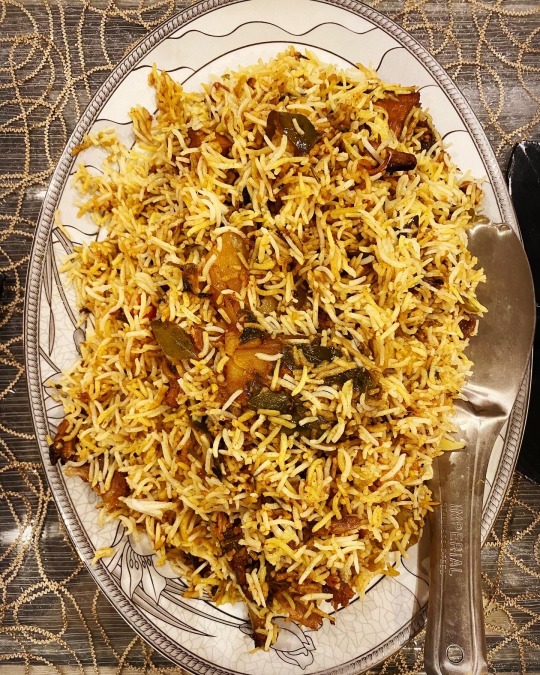
Image 3: Biryani dinner organized for a reunion with friends at our family residence in Karachi.
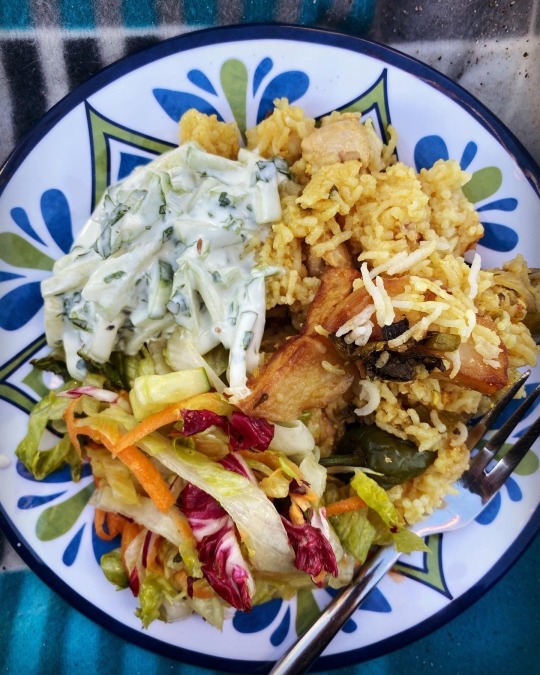
Image 4: Biryani on the Beach, Toronto edition. This Biryani was created by my beloved and we enjoyed it with his family at Woodbine Beach. His sister made a delicious, cooling mint-cucumber yogurt dip to compliment the spicy dish. We enjoyed it to our heart’s content. My beloved is from the Balkans and it has been a joy to witness his deep and growing love for desi food.
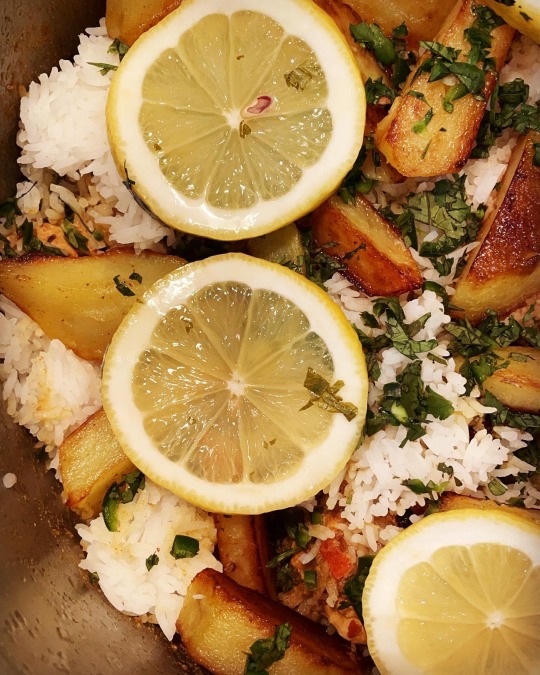
Image 5: Repeated attempts at making and perfecting the Sindhi version of Biryani.
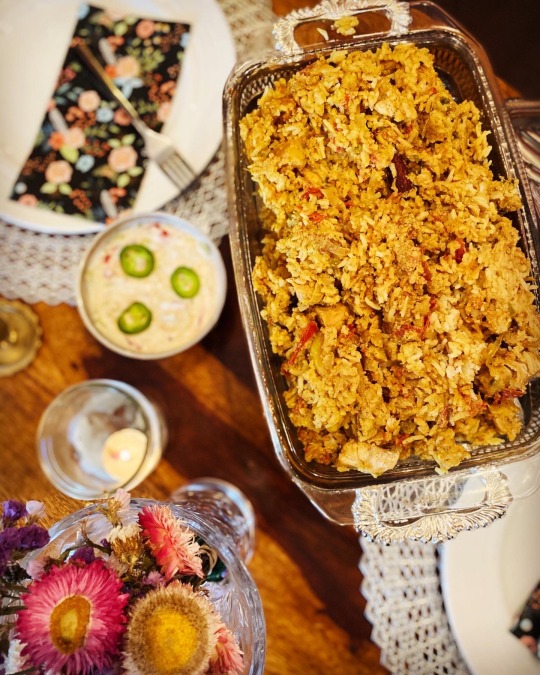
Image 6: My beloved's first attempt at making the dish in Toronto, upon returning to Canada from Pakistan, after carefully collecting our family’s recipes.
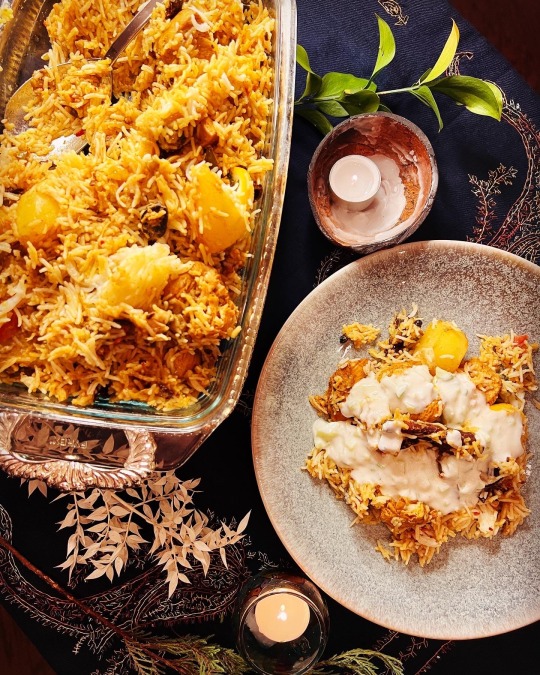
Image 7: Repeated attempts at making and perfecting the Sindhi version of Biryani. This particular Biryani was created for the Dawat Yan Project and will launch next week on dawatyanbanquet.com
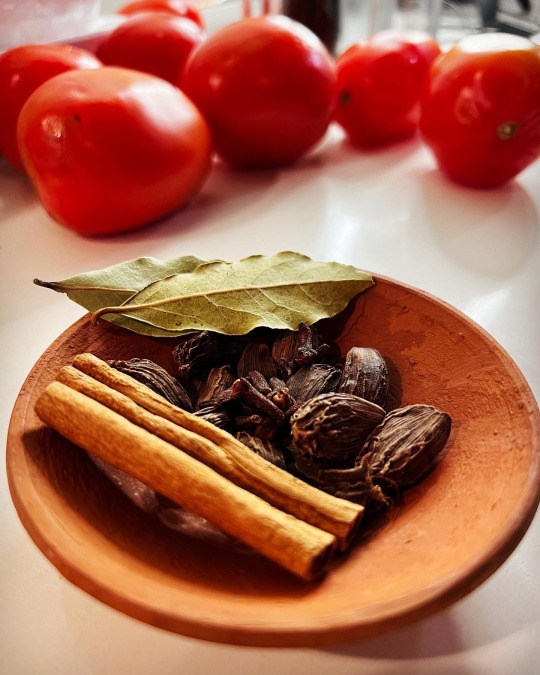
Image 8: An array of spices and tomatoes, key ingredients that go into the Sindhi version of Biryani that is enjoyed throughout Pakistan.
Biryani has the ability to bring people together. The yield is large, enough to satisfy all that partake in the eating of this layered, complex and dynamic rice-based dish. Biryani is enjoyed in a variety of unique ways. In some parts of South Asia, it is consumed with potatoes, while in other parts of the same region, it is eaten only with eggs. Depending on the area, community, province and even family, within Pakistan itself, Biryani is created and consumed in many diverse ways.
Within our household, for example, some of us like it with prunes, while others like it without. Some of us like it plain, while others drown our Biryani in Raita (cucumber-yogurt). Some of us eat it with our hands, while others prefer to cradle the colourful grains of rice with spoons and forks. Some of us like it sweet and spicy, so we may mix Zarda (a vibrant, colourful, sweet rice-based dish) with our Biryani, while others find the sweet and savoury mix to be an absolute abomination.
2 notes
·
View notes
Text
INDIAN FOODS IN USA
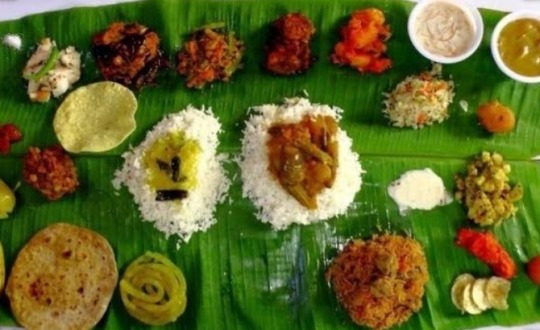
Hi Readers, welcome to indianfoodinusadotcom, Here you can learn all about Indian foods, recipes and all about INDIAN FOOD like {ABOUT INDIAN FOOD}
{HISTORY}
{VEDIC AGES}
{ANTIQUITY}
{FOOD MENTIONED IN ANECIENT INDIAN SCRIPTURE}
{MIDDLE AGE OF 16th CENTURY}
{COLONIAL PERIODS}
{INGREDIENTS}
{RECIPES}
LIKE (a) chicken Biryani (b) mutton biryani (c)Butter chicken (d) chicken tikka masala (e) veg biryani (f) Palak paneer (g) Matar paneer (h) chutneys, AND Many more.
ABOUT INDIAN FOOD in USA
You will get know more about the best restaurants Around the world
INDIAN FOOD consists of a variety of regional and traditional cuisines native to India. Given the diversity in soil, climate, culture, ethnic groups, and occupations, these cuisines vary substantially and use locally available spices, herbs, vegetables, and fruits.
Indian food is also heavily influenced by religion, in particular Hinduism and Islam, cultural choices.
Historical events such as invasions, trade relations, and colonialism have played a role in introducing certain foods to this country. The Columbian discovery of the New World brought a number of new vegetables and fruit to India. A number of these such as potatoes, tomatoes, chillies, peanuts, and guava have become staples in many regions of India.
INDIAN FOOD has shaped the history of international relations; the spice trade between India and Europe was the primary catalyst for Europe's Age of Discovery.
Spices were bought from India and traded around Europe and Asia. INDIAN FOOD has influenced other cuisines across the world, especially those from Europe (especially Britain), the Middle East, Southern African, East Africa, Southeast Asia, North America, Mauritius, Fiji, Oceania, and the Caribbean.
HISTORY OF INDIAN FOOD NON-VEGETARIAN
INDIAN FOOD reflects an 8,000-year history of various groups and cultures interacting with the Indian subcontinent, leading to a diversity of flavors and regional cuisines found in modern-day India. Later, trade with British and Portuguese influence added to the already diverse INDIAN FOOD.
After 9000 BCE, the first period of indirect contact between the Fertile Crescent and Indus Valley civilizations seems to have occurred due to the Neolithic Revolution and the diffusion of agriculture. Around 7000 BCE, agriculture spread from the Fertile Crescent to the Indus Valley, and wheat and barley began to be grown. Sesame and humped cattle were domesticated in the local farming communities.
Mehrgarh is one of South Asia's earliest sites with evidence of farming and herding. From circa 4500 to 1900 BC the rulers of Lower Mesopotamia were Sumerians who spoke a non-Indo-European and non-Semitic language, may have initially come from India and may have been related to the original Dravidian population of India.
By 3000 BCE, turmeric, cardamom, black pepper and mustard were harvested in India.
From Around 2350 BCE the evidence for imports from the Indus to Ur in Mesopotamia have been found, as well as Clove heads which are thought to originate from the Moluccas in Maritime Southeast Asia were found in a 2nd millennium BC site in Terqa. Akkadian Empire records mention timber, carnelian and ivory as being imported from Meluhha by Meluhhan ships, Meluhha being generally considered as the Mesopotamian name for the Indus Valley Civilization.
VEDIC AGE
VEGETARIAN
The ancient Hindu text Mahabharata mentions rice and vegetable cooked together, and the word "pulao" or "pallao" is used to refer to the dish in ancient Sanskrit works, such as Yājñavalkya Smṛti. Ayurveda, ancient Indian system of wellness, deals with holistic approach to the wellness, and it includes food, dhyana (meditation) and yoga.
ANTIQUITY
Early diet in India mainly consisted of legumes, vegetables, fruits, grains, dairy products, and honey.
Staple foods eaten today include a variety of lentils (dal), whole-wheat flour (aṭṭa), rice, and pearl millet (bājra), which has been cultivated in the Indian subcontinent since 6200 BCE.
Over time, segments of the population embraced vegetarianism during the Śramaṇa movement while an equitable climate permitted a variety of fruits, vegetables, and grains to be grown throughout the year.
A food classification system that categorised any item as saatvic, raajsic, or taamsic developed in Yoga tradition. The Bhagavad Gita proscribes certain dietary practices.
Consumption of beef is taboo, due to cows being considered sacred in Hinduism.[14] Beef is generally not eaten by Hindus in India except for Kerala, parts of southern Tamil Nadu and the north-east.
PICKLES
FOOD MENTIONED IN ANECIENT INDIAN SCRIPTURE
While many ancient Indian recipes have been lost in history, one can look at ancient texts to see what was eaten in ancient and pre-historic India.
Barley—(known as Yava in both Vedic and Classical Sanskrit) is mentioned many times in Rigveda and other Indian scriptures as one of the principal grains in ancient India
Betel leaf—primary use is as a wrapper for the chewing of areca nut or tobacco, where it is mainly used to add flavour; may also be used in cooking, usually raw, for its peppery taste
Breadfruit—fritters called jeev kadge phodi in Konkani or kadachakka varuthath in Malayalam are a local delicacy in coastal Karnataka and Kerala
Chickpeas—popular dishes are made with chickpea flour, such as mirchi bajji and mirapakaya bajji
Curd—a traditional yogurt or fermented milk product, originating from the Indian subcontinent, usually prepared from cow's milk, and sometimes buffalo milk, or goat milk
Figs —cultivated from Afghanistan to Portugal, also grown in Pithoragarh in the Kumaon hills of India; from the 15th century onwards, also grown in areas including Northern Europe and the New World
Ghee—a class of clarified butter that originated in ancient India, commonly used in the Indian subcontinent, Middle-Eastern cuisine, traditional medicine, and religious rituals
Grape wine —first-known mention of grape-based wines in India is from the late 4th-century BC writings of Chanakya
Honey —the spiritual and supposed therapeutic use of honey in ancient India was documented in both the Vedas and the Ayurveda texts
Mango—the Jain goddess Ambika is traditionally represented as sitting under a mango tree
Mustard —brown mustard is a spice that was cultivated in the Indus Valley civilization and is one of the important spices used in the Indian subcontinent today
Pomegranate—in some Hindu traditions, the pomegranate (Hindi: anār) symbolizes prosperity and fertility, and is associated with both Bhoomidevi (the earth goddess) and Lord Ganesha (the one fond of the many-seeded fruit)
Rice—cultivated in the Indian subcontinent from as early as 5,000 BC
Rice cake—quite a variety are available
Rose apple—mainly eaten as a fruit and also used to make pickles (chambakka achar)
Saffron —almost all saffron grows in a belt from Spain in the west to Kashmir in the east
Salt —considered to be a very auspicious substance in Hinduism and is used in particular religious ceremonies like house-warmings and weddings; in Jainism, devotees lay an offering of raw rice with a pinch of salt before a deity to signify their devotion, and salt is sprinkled on a person's cremated remains before the ashes are buried
Sesame oil —popular in Asia, especially in Korea, China, and the South Indian states of Karnataka, Andhra Pradesh, and Tamil Nadu, where its widespread use is similar to that of olive oil in the Mediterranean
Sorghum—commonly called jwaarie, jowar, jola, or jondhalaa, sorghum is one of the staple sources of nutrition
Sugar—produced in the Indian subcontinent since ancient times, its cultivation spread from there into modern-day Afghanistan through the Khyber Pass
Sugarcane—the earliest known production of crystalline sugar began in northern India; the earliest evidence of sugar production comes from ancient Sanskrit and Pali texts
Turmeric —used widely as a spice in South Asian and Middle Eastern cooking
Middle Ages to the 16th Century
VEG DUM BIRYANI
During the Middle Ages, several Indian dynasties were predominant, including the Gupta dynasty. Travel to India during this time introduced new cooking methods and products to the region, including tea.
India was later invaded by tribes from Central Asian cultures, which led to the emergence of Mughlai cuisine, a mix of Indian and Central Asian cuisine. Hallmarks include seasonings such as saffron.
Colonial Period
The Portuguese and British during their rule introduced cooking techniques such as baking, and foods from the New World and Europe.
The new-world vegetables popular in cuisine from the Indian subcontinent include tomato, potato, sweet potatoes, peanuts, squash, and chilli. Most New World vegetables such as sweet potatoes, potatoes, Amaranth, peanuts and cassava based Sago are allowed on Hindu fasting days. Cauliflower was introduced by the British in 1822. In the late 18th/early 19th century, an autobiography of a Scottish Robert Lindsay mentions a Sylheti man called Saeed Ullah cooking a curry for Lindsay's family. This is possibly the oldest record of INDIAN FOOD in the United Kingdom.
INGREDIENTS
Staple foods of INDIAN FOOD include pearl millet (bājra), rice, whole-wheat flour (aṭṭa), and a variety of lentils, such as masoor (most often red lentils), tuer (pigeon peas), urad (black gram), and moong (mung beans). Lentils may be used whole, dehusked—for example, dhuli moong or dhuli urad—or split. Split lentils, or dal, are used extensively, Some pulses, such as channa or cholae (chickpeas), rajma (kidney beans), and lobiya (black-eyed peas) are very common, especially in the northern regions. Channa and moong are also processed into flour (besan).
Many Indian dishes are cooked in vegetable oil, but peanut oil is popular in northern and western India, mustard oil in eastern India, and coconut oil along the western coast, especially in Kerala and parts of southern Tamil Nadu, Gingelly (sesame) oil is common in the south since it imparts a fragrant, nutty aroma.
In recent decades, sunflower, safflower, cottonseed, and soybean oils have become popular across India, Hydrogenated vegetable oil, known as Vanaspati ghee, is another popular cooking medium, Butter-based ghee, or deshi ghee, is used commonly.
Many types of meat are used for Indian cooking, but chicken and mutton tend to be the most commonly consumed meats. Fish and beef consumption are prevalent in some parts of India, but they are not widely consumed except for coastal areas, as well as the north east.
The most important and frequently used spices and flavourings in INDIAN FOOD are whole or powdered chilli pepper (mirch, introduced by the Portuguese from Mexico in the 16th century), black mustard seed (sarso), cardamom (elaichi), cumin (jeera), turmeric (haldi), asafoetida (hing), ginger (adrak), coriander (dhania), and garlic (lasoon).
One popular spice mix is garam masala, a powder that typically includes seven dried spices in a particular ratio, including black cardamom, cinnamon (dalchini), clove (laung), cumin (jeera), black peppercorns, coriander seeds and anise star.
Each culinary region has a distinctive garam masala blend—individual chefs may also have their own. Goda masala is a comparable, though sweet, spice mix popular in Maharashtra. Some leaves commonly used for flavouring include bay leaves (tejpat), coriander leaves, fenugreek (methi) leaves, and mint leaves. The use of curry leaves and roots for flavouring is typical of Gujarati and South INDIAN FOOD.
2 notes
·
View notes
Text
Indian Restaurants in McKinney: A Flavorful Exploration of Authentic Indian Cuisine
McKinney, Texas, is home to a variety of dining experiences, but few can match the bold flavors and unique aromas of Indian cuisine. Indian restaurants in McKinney offer an incredible variety of dishes that highlight the rich traditions of Indian cooking. Whether you're a connoisseur of Indian food or exploring the cuisine for the first time, the options available in McKinney are sure to impress.
Why Indian Cuisine?
Indian food is known for its intricate flavors, vibrant colors, and the perfect balance of spices. With a cuisine that’s rich in history and diversity, every dish is carefully crafted to provide a multi-sensory experience. Whether you're enjoying a comforting curry, crispy samosas, or a tender tandoori dish, Indian food offers something for every palate.
What to Expect at Indian Restaurants in McKinney
A Variety of Flavors: One of the standout features of Indian cuisine is its wide range of flavors. From the rich, creamy sauces of butter chicken and chicken tikka masala to the tangy, fiery heat of vindaloo and madras curry, Indian restaurants in McKinney offer a rich menu that caters to all taste preferences. The use of spices like turmeric, coriander, cumin, and garam masala helps to create deep, complex flavors in every dish.
Tandoori Dishes: A signature of Indian cuisine is the tandoor, a traditional clay oven used to cook meats and bread. Tandoori chicken, lamb kebabs, and naan (a type of flatbread) are all staples at Indian restaurants, cooked in the tandoor to achieve that perfect smoky flavor. These dishes provide a satisfying, savory experience that you won’t find elsewhere.
Vegetarian Options: India is a land rich in vegetarian cuisine, and McKinney’s Indian restaurants reflect this diversity. Whether you’re a vegetarian or simply looking to enjoy a plant-based meal, you’ll find dishes like palak paneer (spinach and Indian cheese), aloo gobi (potatoes and cauliflower), and chana masala (chickpeas in a spiced gravy). These meals are packed with flavor and a great way to enjoy fresh, wholesome ingredients.
Rice and Biryani: Rice is a key component of Indian cuisine, and biryani is one of the most beloved rice dishes. Layered with spiced meat or vegetables and cooked to perfection, biryani offers a rich, satisfying experience. Many Indian restaurants in McKinney also serve other rice-based dishes like pilaf or jeera rice (cumin rice), which pair perfectly with curries and gravies.
Indian Sweets and Desserts: No Indian meal is complete without a sweet ending. Traditional desserts like gulab jamun (deep-fried dough balls soaked in syrup), kheer (rice pudding), and rasgulla (sweet cheese balls) offer a sweet balance to the savory dishes. These desserts are rich and indulgent, providing the perfect way to finish your meal.
Why Choose Indian Restaurants in McKinney?
Authentic Dining Experience: The Indian restaurants in McKinney are committed to offering an authentic experience, using traditional recipes, cooking methods, and high-quality spices to create flavorful dishes that reflect the rich culinary history of India.
Warm and Welcoming Atmosphere: Many Indian restaurants in McKinney feature colorful decor and a cozy ambiance that reflects the vibrant culture of India. The inviting atmosphere makes them perfect for both casual dining and special occasions, whether you’re dining with friends, family, or celebrating a milestone event.
Customizable Spice Levels: Whether you prefer your food mild or enjoy the heat of a spicy curry, Indian restaurants in McKinney typically allow diners to adjust the spice level of their dishes. This way, you can enjoy your meal exactly how you like it, without sacrificing the authentic flavors of Indian cuisine.
Great for Groups and Families: Indian food is made for sharing. The large portions and variety of dishes make it ideal for group dining, whether you're out with family or friends. Many restaurants offer family-style servings, allowing everyone to sample a little bit of everything.
Popular Dishes to Try
Butter Chicken: A creamy, mild curry that’s rich in flavor and a perfect starting point for newcomers to Indian cuisine.
Lamb Rogan Josh: A spiced lamb curry that’s tender and packed with aromatic flavors.
Samosas: Deep-fried pastries filled with spiced potatoes or meat, great for starting your meal.
Tandoori Chicken: Chicken marinated in yogurt and spices, then cooked in the tandoor for a smoky flavor.
Biryani: A fragrant rice dish with layers of spiced meat or vegetables, often served with yogurt or raita.
Conclusion
McKinney, TX, offers a wealth of Indian restaurants that bring the flavors of India to your table. With a focus on authentic recipes, fresh ingredients, and a variety of bold spices, these restaurants create dishes that appeal to all tastes, from spicy curries to milder, creamy gravies. Whether you’re craving a hearty curry, a smoky tandoori dish, or a flavorful vegetarian meal, the Indian restaurants in McKinney are sure to provide a memorable dining experience.
#indian restaurants in mckinney#indian food mckinney#indian restaurant mckinney tx#indian restaurants in mckinney tx#indian restaurants mckinney tx
0 notes
Text
The Unbeatable Lunch Specials at Top of India
Introduction: Discovering Culinary Delights
When it comes to enjoying a delightful lunch, few experiences can rival what you’ll find at Top of India. Nestled in the heart of the city, this restaurant has carved a niche for itself with its unbeatable lunch specials that tantalize taste buds and leave patrons longing for more. In this article, we will embark on an extensive culinary journey exploring everything from the vibrant ambiance to the mouthwatering dishes that make Top of India a must-visit destination for food lovers.
The Unbeatable Lunch Specials at Top of India
At Top of India, lunch is not just a meal; it’s an experience. The unbeatable lunch specials offered here showcase a rich tapestry of flavors, textures, and aromas that represent the essence of Indian cuisine. From aromatic biryanis to succulent tandoori dishes, every bite tells a story—a story filled with tradition, culture, and love for food.
Imagine walking into a space adorned with warm hues and traditional Indian decor. The inviting aroma wafts through the air as you take your seat, ready to indulge in a feast that promises to be unforgettable. With each dish thoughtfully crafted using fresh ingredients and authentic spices, Top of India guarantees a lunch experience that’s second to none.
A Feast for the Senses: What Makes It Special
So, what sets apart the lunch specials at Top of India? Here are some key aspects:
Diverse Menu Offerings The menu features an array of options catering to different dietary preferences—vegetarian, vegan, gluten-free, and meat lovers alike. Fresh Ingredients Every dish is prepared using fresh and locally sourced ingredients, ensuring quality and flavor shine through. Authentic Recipes The chefs at Top of India employ traditional cooking methods passed down through generations, delivering authenticity in every bite. Inviting Atmosphere The restaurant’s ambiance complements its culinary offerings perfectly, creating an inviting environment where diners can relax and enjoy their meals. Affordable Pricing One cannot overlook the affordability factor—the lunch specials are reasonably priced without compromising on quality or taste. Exceptional Service Friendly staff are always eager to assist and make your dining experience memorable. Exploring Signature Dishes on the Lunch Menu Starters That Set the Tone
Before diving into main courses, let’s talk about appetizers! At Top of India, starters play a crucial role in setting the tone healthy Indian food for your meal. Here are some crowd favorites:
Samosas: A Classic Indian Delight
Crispy on the outside and filled Restaurant with spiced potatoes and peas on the inside—samosas are always a hit! These golden-brown pastries come served with tangy tamarind chutney that adds an extra layer of flavor.
Paneer Tikka: Grilled Perfection
For those craving something hearty ye
youtube
0 notes
Text
Tiffin Service in GTA - Spicy Feast
SpicyFeast: Your Trusted Tiffin Service in GTA
Are you searching for a delicious and reliable Tiffin Service in GTA? Look no further than SpicyFeast, your go-to destination for fresh, home-cooked Indian meals delivered straight to your doorstep. Whether you’re a student, working professional, or simply craving authentic Indian food, we’ve got you covered with our carefully curated meal plans.
Delicious Home-Style Indian Meals
At SpicyFeast, we believe in bringing the true flavors of India to your plate. Our menu features a rotating selection of nutritious and flavorful dishes, including:
Dal Tadka & Jeera Rice – A comforting and wholesome lentil dish paired with fragrant cumin-infused rice.
Shahi Paneer – Cottage cheese cubes cooked in a creamy and mildly spiced tomato gravy.
Aloo Gobi – A classic North Indian dish made with potatoes and cauliflower, seasoned with aromatic spices.
Rajma Masala – Protein-rich kidney beans in a tangy tomato-based curry served with steamed basmati rice.
Butter Chicken – A rich and creamy Mughlai-style dish that is a favorite among non-vegetarian lovers.
Vegetable Biryani – Fragrant basmati rice cooked with seasonal vegetables and traditional spices.
Each meal is thoughtfully prepared using fresh ingredients and traditional recipes, ensuring a perfect balance of taste and nutrition.
Why Choose SpicyFeast’s Tiffin Service in GTA?
We understand the importance of healthy and delicious food, especially for those who have a busy lifestyle. Our Tiffin Service in GTA is designed to make your life easier with:
Freshly Cooked Meals – Made daily with high-quality ingredients, ensuring great taste and nutrition.
Affordable & Flexible Plans – Choose from daily, weekly, or monthly meal subscriptions to suit your needs.
Hygienic & Eco-Friendly Packaging – Our meals are packed in sustainable containers that retain freshness and flavor.
Timely Delivery – Get your meals delivered right on time to your home or workplace across GTA.
Vegetarian & Non-Vegetarian Options – Enjoy a variety of meal choices customized to your preference.
How to Order?
Getting started with SpicyFeast is simple and hassle-free:
Choose Your Plan – Select from regular or special tiffin options.
Customize Your Meals – Pick from a range of delicious vegetarian and non-vegetarian dishes.
Make Payment – Securely pay online via debit/credit card or e-transfer.
Enjoy Fresh Food Daily – Sit back and enjoy home-cooked meals delivered straight to your door!
Experience the Best Tiffin Service in GTA!
If you are looking for an Indian Tiffin Service in GTA that offers the perfect combination of taste, quality, and convenience, SpicyFeast is the right choice for you! Visit SpicyFeast today to explore our menu and subscribe to a meal plan that suits your lifestyle. Let us take care of your meals while you enjoy the authentic flavors of India!
0 notes
Text
Discover Pittsburgh Best Indian Restaurant for Authentic Flavors
Pittsburgh is a city known for its rich culinary diversity, and when it comes to authentic Indian cuisine, food lovers have plenty of options to explore. Whether you crave aromatic curries, flavorful biryanis, or freshly baked naan, finding Pittsburgh best Indian restaurant can be an exciting adventure. With a growing number of Indian restaurants offering traditional flavors and innovative dishes, this guide will help you discover the ultimate dining experience.

What Makes the Best Indian Restaurant?
When searching for Pittsburgh best Indian restaurant, several factors contribute to an exceptional dining experience:
Authenticity: The use of traditional spices, cooking techniques, and recipes passed down through generations.
Ambiance: A warm, inviting setting that enhances the experience of enjoying Indian cuisine.
Variety: A menu featuring North and South Indian dishes, catering to both vegetarian and non-vegetarian preferences.
Service: Friendly, knowledgeable staff who can guide diners through the menu.
Top Dishes to Try at Pittsburgh’s Best Indian Restaurants
A visit to Pittsburgh best Indian restaurant is incomplete without trying some of these iconic dishes:
Butter Chicken – A creamy, tomato-based curry that pairs perfectly with naan or rice.
Paneer Tikka – Marinated paneer cubes grilled to perfection, offering a smoky and tangy flavor.
Biryani – A fragrant rice dish cooked with aromatic spices and either chicken, lamb, or vegetables.
Masala Dosa – A South Indian specialty featuring a crispy crepe filled with spiced potato.
Tandoori Chicken – Chicken marinated in yogurt and spices, cooked in a traditional clay oven.
Dal Makhani – A slow-cooked black lentil dish rich in flavor and creamy texture.
Chaat – A popular street food known for its spicy, tangy, and crunchy elements.
Why Pittsburgh Loves Indian Cuisine
The popularity of Indian food in Pittsburgh has grown tremendously, with food enthusiasts embracing its bold flavors and diverse menu options. Many diners seek out Pittsburgh best Indian restaurant to enjoy:
Rich and aromatic flavors that blend sweet, spicy, and savory elements.
Health benefits from spices like turmeric, cumin, and coriander, known for their medicinal properties.
Vegetarian and vegan-friendly options that cater to a wide audience.
Cultural experience that introduces Pittsburgh residents to India’s regional culinary diversity.
How to Choose Pittsburgh Best Indian Restaurant
With so many options, selecting Pittsburgh best Indian restaurant can be overwhelming. Here are some tips to help you decide:
Check Reviews & Ratings – Websites like Yelp and Google can offer insights into customer experiences.
Explore the Menu – A diverse selection of North and South Indian dishes is a good indicator of authenticity.
Look for Fresh Ingredients – The best restaurants prioritize high-quality ingredients and freshly prepared meals.
Visit During Buffet Hours – Some restaurants offer buffets, allowing you to sample multiple dishes.
Consider Ambiance & Service – A welcoming environment with attentive staff enhances the overall experience.
conclusion
Pittsburgh is home to several outstanding Indian restaurants, but only a few can claim the title of Pittsburgh best Indian restaurant. Whether you are a fan of North Indian curries, South Indian dosas, or fusion dishes with a modern twist, Pittsburgh’s Indian dining scene has something to offer.
#best monroeville restaurants#pittsburgh best indian restaurant#best indian buffet pittsburgh#best indian restaurants pittsburgh#best indian cuisine near sri venkateshwara temple#best dinner places near sri venkateshwara temple
0 notes
Text
Exploring the World of Indian Spices and Organics
Indian spices and organics what's so special about them? You know that already the exceptional taste and minimal use of chemicals make them stand out, and that is why they are exported all over the world. Anything which is free of additives and preservatives is for sure harmless, and that is why it has so much demand, so many cuisines have incorporated organic Indian spices to uplift the taste of the food. The aroma is impeccable also spices Like Anise, Cardamom, Cinnamon, Clove, Coriander, Fennel, Ginger, Allspice, Curry powder, Mace, Nutmeg, Bay leaf, Dill, Garlic, Mint, Basil, Cayenne pepper, Marjoram, Oregano, Paprika, Pepper, Asafoetida and Caraway have many health benefits as well, spices and organics are produced in India because the climate favours the production.

A little about organics
Well organic is a lucid term as discussed earlier organic, jjjjust means any food item which is free of harmful additives, preservatives, and synthetic chemicals organic fruits, vegetables and multi-grains are free of harmful pesticides which makes them safe for the environment.
How to Use Indian spices and organics in your daily cooking.
Well first you have to make sure that the Indian spices and organics are actually organic any organic product receives a government-approved certification next step is quite easy you can look out for different recipes online, in this blog I will mention 5 recipes which you can try out.
Five 5 recipes which can be made using Indian spices and organics
1. Organic Vegetable Biryani
Sauté cumin, bay leaf, cinnamon, cardamom, onions, and ginger-garlic paste in a pan with ghee or oil.
Toss in chopped tomatoes, turmeric, coriander powder, and mixed veggies. Cook for 5 mins.
Add soaked rice, garam masala, and vegetable broth. Simmer until rice is cooked.
Garnish with cilantro and mint.
2. Organic Masoor Dal
Sauté cumin, onions, ginger-garlic paste, and tomatoes in oil.
Add turmeric, coriander powder, and salt. Stir in rinsed lentils and broth.
Simmer for 20 mins, then garnish with cilantro.
3. Organic Tofu Tikka Masala
Marinate tofu with ginger-garlic paste and garam masala in vessel.
Sauté cumin seeds, onions, and ginger-garlic paste. Add tomatoes and spices.
Add tofu, coconut milk, and simmer for 5–7 mins.
Garnish with cilantro.
4. Organic Aloo Gobi
Sauté cumin seeds, onions, ginger-garlic paste. Add tomatoes and spices.
Add potatoes and cauliflower, cook until tender.
Garnish with cilantro.
5. Organic Chana Masala
Sauté cumin seeds, onions, and ginger-garlic paste. Add tomatoes and spices.
Add cooked chickpeas, and simmer for 10–15 mins.
Stir in garam masala and garnish with cilantro.
Gift them to your loved ones
Butter Chicken Spice, Blend Chickpea. Lentil Spice Blend, Biryani Spice Blend, and Korma Spice Blend are, a few of the most famous spice blends in India, which anyone can gift their loved ones so they can enjoy the veg and nonvegetarian delicacies prepare these dishes for lunch or dinner you will experience a flavorful delight.
Some Places where Indian spices are cultivated
India has a diverse climate, which allows cultivation of spices and organic crops across various regions. Keralas spice-rich landscapes in Wayanad and Thekkadyare renowned for producing black pepper, cardamom, and cinnamon, Karnataka's Coorg and Chikmagalur are famous for organic coffee and spices like vanilla. Tamil Nadu’s Nilgiri Hills provide turmeric, coriander, and curry leaves, with increasing adoption of organic farming practices.
Conclusion
Many farmers all over the globe have shifted to organic farming since Indian spices and organics have started gaining popularity they also sell their products at an Indian spice shop so that they get the correct price for their products, the spices which I have mentioned earlier can promote digestion, reduce inflammation and detoxify the body some spices are even known for their skin healing properties try them out and you will know.
1 note
·
View note